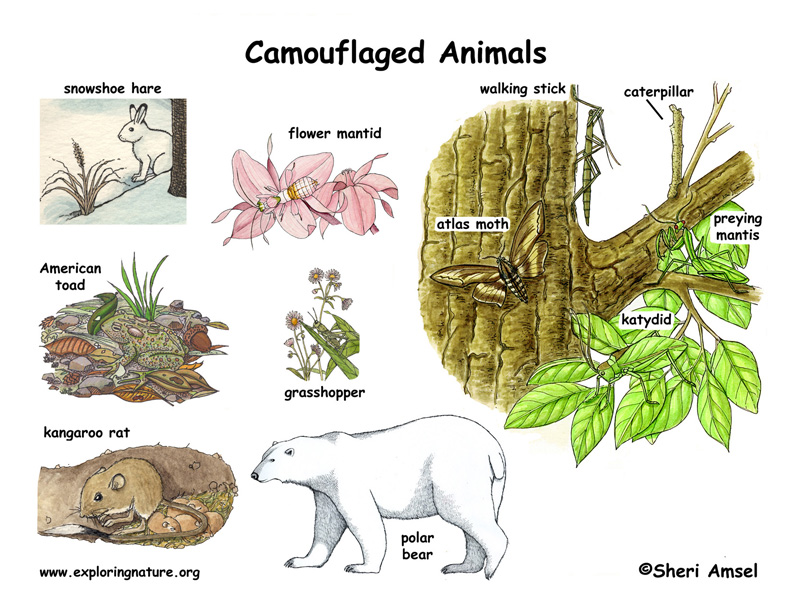Types of camouflage:-

There are four basic types of camouflage:
- Concealing Coloration: when an animal hides itself against a background of the same color. There are many well-known examples of this type of camouflage (e.g., polar bears, artic fox, snowshoe hare). Concealing coloration camouflage is one of the reasons why many animals living in the Artic are white, while many animals living in forests are brown (e.g., deers).
A snowshoe hare has white fur in winter. But this color is not a good for camouflage purposes during summer. During summer, this hare grows a brown colored coat. Since a hare's coat/fur, like our hair or fingernails, is made up dead cells, it can not just change the color of its coat. Instead it has to shed its winter coat and grow a new coat in summer.
While mammals and birds can not change colors rapidly, some reptiles and fish can change colors in a flash. Chameleons change color to hide themselves and sometimes to show their mood! The octopus can not only change color but can also change the texture of their skin (to blend with their surroundings even better). - Disruptive Coloration: The stripes, spots or other patterns on some animals are used to make it hard for other animals to see the outline of their bodies. A herd of zebras crowded together might look like one large mass to a lion rather several zebras. This makes it hard for the lion to single out a weak zebra and come up with a good plan of attack.
Tigers and leopards also use disruptive coloration. Predators like leopard move around in low branches. Their spots helps them hide well in such an environment where there lots of shadows of leafs and spots of light come through. So they don't stick out against such a background. - Disguise: This is like concealing coloration except that the animals blend in with their surroundings by their shape and/or texture rather than color.
Most of the examples of creatures that use this type of camouflage are insects. Examples include Katydid, Indian leaf butterfly, and Walking stick insect. - Mimicry: Animals that use mimicry are imposture. They mimic the characteristics of unappetizing animals. A monarch butterfly is toxic and unappetizing to birds. Viceroy butterflies safeguard themselves from birds who prey upon them by looking a lot like monarch butterflies.
No comments:
Post a Comment